| Listing 1 - 10 of 13 | << page >> |
Sort by
|
Book
Year: 2004 Publisher: [Washington, D.C.] : U.S. Dept. of Agriculture, Farm Service Agency,
Abstract | Keywords | Export | Availability | Bookmark
 Loading...
Loading...Choose an application
- Reference Manager
- EndNote
- RefWorks (Direct export to RefWorks)
Book
Year: 2004 Publisher: [Washington, D.C.] : U.S. Dept. of Agriculture, Economic Research Service,
Abstract | Keywords | Export | Availability | Bookmark
 Loading...
Loading...Choose an application
- Reference Manager
- EndNote
- RefWorks (Direct export to RefWorks)
Agricultural conservation --- Soil conservation --- Agriculture and state --- Rural development --- Economic aspects --- Economic aspects
Book
Year: 2004
Abstract | Keywords | Export | Availability | Bookmark
 Loading...
Loading...Choose an application
- Reference Manager
- EndNote
- RefWorks (Direct export to RefWorks)
Agricultural conservation --- Conservation of natural resources --- Soil conservation --- Forest conservation --- Evaluation. --- Nature
Book
Year: 2004 Publisher: Washington, DC
Abstract | Keywords | Export | Availability | Bookmark
 Loading...
Loading...Choose an application
- Reference Manager
- EndNote
- RefWorks (Direct export to RefWorks)
Agricultural conservation --- Government policy --- Commodity Credit Corporation --- Rules and practice --- Evaluation.
Periodical
ISSN: 13369253 13365452 Year: 2004 Publisher: Nitra : Slovenská poln̕ohospodárska univerzita v Nitre,
Abstract | Keywords | Export | Availability | Bookmark
 Loading...
Loading...Choose an application
- Reference Manager
- EndNote
- RefWorks (Direct export to RefWorks)
Rural development --- Agricultural conservation --- Agricultural conservation. --- Rural development. --- Eastern Europe. --- Business, Economy and Management --- Business Management --- Economics --- regional development --- rural development --- environmental science --- ecology --- Community development, Rural --- Development, Rural --- Integrated rural development --- Regional development --- Rehabilitation, Rural --- Rural community development --- Rural economic development --- Agriculture and state --- Community development --- Economic development --- Regional planning --- Agricultural resources conservation --- Conservation of agricultural resources --- Agricultural ecology --- Agriculture --- Conservation of natural resources --- Environmental protection --- Land use, Rural --- Citizen participation --- Social aspects --- Europe, Eastern --- East Europe --- Développement rural --- Conservation des ressources agricoles
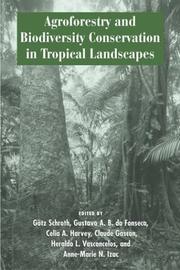
ISBN: 1597267449 1423765516 9781423765516 1559633565 9781559633567 1559633573 9781559633574 9781597267441 Year: 2004 Publisher: Washington Island Press
Abstract | Keywords | Export | Availability | Bookmark
 Loading...
Loading...Choose an application
- Reference Manager
- EndNote
- RefWorks (Direct export to RefWorks)
Agroforestry --- Agrobiodiversity --- Agrobiodiversity conservation --- Conservation of agrobiodiversity --- Agricultural conservation --- Biodiversity conservation --- Agro-forestry --- Agriculture --- Forests and forestry --- Tree crops --- Agricultural biodiversity --- Agricultural biological diversity --- Agro-biodiversity --- Agricultural ecology --- Biodiversity --- Environmental aspects --- Agroforestry - Tropics --- Agrobiodiversity - Tropics --- Agroforestry - Environmental aspects - Tropics --- Agrobiodiversity conservation - Tropics
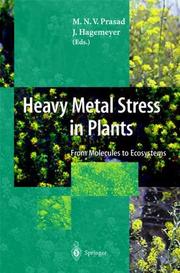
ISBN: 3540401318 3642072682 3662077434 Year: 2004 Publisher: Berlin ; London : Springer,
Abstract | Keywords | Export | Availability | Bookmark
 Loading...
Loading...Choose an application
- Reference Manager
- EndNote
- RefWorks (Direct export to RefWorks)
Heavy metal phytotoxicity has been known for more than a century. Therefore, it is astonishing that interest in the effects of heavy metals on organisms has been aroused only recently. Research in the past years, however, has confirmed the immense damage by metal pollution to plants, the soil and ultimately to humans. This completely updated and enlarged second edition gives a state-of-the art review on both field and laboratory work. It deals with the various functional and ecological aspects of heavy metal stress on plants and outlines the scope for future research and the possibilities for remediation.
Plants --- Heavy-metal tolerant plants --- Heavy metals --- Métallophytes --- Effect of heavy metals on --- Environmental plants --- ECO Ecology --- ecology --- heavy metals --- physiology --- stress --- Métallophytes --- Environmental plants. --- Plant biochemistry. --- Soil science. --- Soil conservation. --- Ecotoxicology. --- Plant ecology. --- Plant physiology. --- Plant Biochemistry. --- Soil Science & Conservation. --- Plant Ecology. --- Plant Physiology. --- Botany --- Physiology --- Phytoecology --- Vegetation ecology --- Ecology --- Ecotoxicology --- Pollutants --- Pollution --- Environmental health --- Toxicology --- Conservation of soil --- Erosion control, Soil --- Soil erosion --- Soil erosion control --- Soils --- Agricultural conservation --- Soil management --- Pedology (Soil science) --- Agriculture --- Earth sciences --- Phytochemistry --- Plant biochemistry --- Plant chemistry --- Biochemistry --- Phytochemicals --- Plant biochemical genetics --- Control --- Prevention --- Conservation --- Floristic ecology
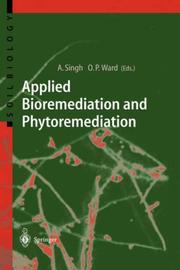
ISSN: 16133382 ISBN: 3540210202 3642059082 3662057948 Year: 2004 Volume: 1 Publisher: Berlin ; Heidelberg ; New York, NY [etc.] : Springer-Verlag,
Abstract | Keywords | Export | Availability | Bookmark
 Loading...
Loading...Choose an application
- Reference Manager
- EndNote
- RefWorks (Direct export to RefWorks)
The production of a vast array of chemicals, especially petroleum compounds during the last century, has caused a serious deterioration in environmental quality. In this context, one major threat is posed by the continually expanding areas of contaminated soils and sediments. Biotechnological methods based on the biodegradation of environmental pollutants or phytoremediation of persistent organic contaminants and metals are being developed. Bioremediation has now been used successfully to remediate many petroleum-contaminated sites. However, there are as yet no commercial technologies commonly used to remediate the most recalcitrant contaminants, such as explosives, pesticides and metallic pollutants. Nevertheless, bioremediation is a rapidly advancing field and new bio-based remedial technologies are continuing to emerge. For this volume, a number of experts from universities, government laboratories and industry, have contributed chapters on innovative methods in bioremediation and phytoremediation.
Soil remediation. --- Bioremediation. --- Phytoremediation. --- Sols --- Biorestauration --- Phytorestauration --- Décontamination --- Décontamination --- Soil science. --- Soil conservation. --- Environmental pollution. --- Microbiology. --- Ecotoxicology. --- Soil Science & Conservation. --- Terrestrial Pollution. --- Applied Microbiology. --- Ecotoxicology --- Pollutants --- Pollution --- Environmental health --- Toxicology --- Microbial biology --- Biology --- Microorganisms --- Chemical pollution --- Chemicals --- Contamination of environment --- Environmental pollution --- Contamination (Technology) --- Asbestos abatement --- Bioremediation --- Environmental engineering --- Environmental quality --- Factory and trade waste --- Hazardous waste site remediation --- Hazardous wastes --- In situ remediation --- Lead abatement --- Refuse and refuse disposal --- Conservation of soil --- Erosion control, Soil --- Soil erosion --- Soil erosion control --- Soils --- Agricultural conservation --- Soil management --- Pedology (Soil science) --- Agriculture --- Earth sciences --- Environmental aspects --- Control --- Prevention --- Conservation
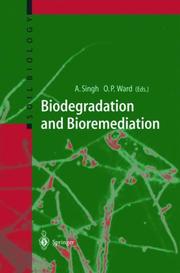
ISSN: 16133382 ISBN: 3540211012 3642059295 3662060663 Year: 2004 Volume: 2 Publisher: Berlin Heidelberg : Springer-Verlag,
Abstract | Keywords | Export | Availability | Bookmark
 Loading...
Loading...Choose an application
- Reference Manager
- EndNote
- RefWorks (Direct export to RefWorks)
Bioremediation. --- Hazardous wastes --- Biorestauration --- Déchets dangereux --- Biodegradation. --- Biodégradation --- Déchets dangereux --- Biodégradation --- Soil science. --- Soil conservation. --- Microbiology. --- Ecotoxicology. --- Environmental pollution. --- Soil Science & Conservation. --- Applied Microbiology. --- Terrestrial Pollution. --- Chemical pollution --- Chemicals --- Contamination of environment --- Environmental pollution --- Pollution --- Contamination (Technology) --- Asbestos abatement --- Bioremediation --- Environmental engineering --- Environmental quality --- Factory and trade waste --- Hazardous waste site remediation --- In situ remediation --- Lead abatement --- Pollutants --- Refuse and refuse disposal --- Ecotoxicology --- Environmental health --- Toxicology --- Microbial biology --- Biology --- Microorganisms --- Conservation of soil --- Erosion control, Soil --- Soil erosion --- Soil erosion control --- Soils --- Agricultural conservation --- Soil management --- Pedology (Soil science) --- Agriculture --- Earth sciences --- Environmental aspects --- Control --- Prevention --- Conservation --- Biotransformation (metabolism) --- Microbial biotechnology
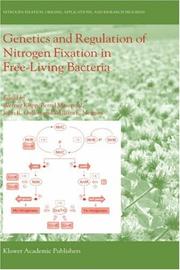
ISBN: 9781402021787 140202178X 9781402021794 9786610460649 1280460644 1402021798 Year: 2004 Volume: 2 Publisher: Dordrecht ; Boston : Kluwer Academic Publishers,
Abstract | Keywords | Export | Availability | Bookmark
 Loading...
Loading...Choose an application
- Reference Manager
- EndNote
- RefWorks (Direct export to RefWorks)
Genetics and Regulation of Nitrogen-Fixing Bacteria This book is the second volume of a seven-volume series, which covers all fields of research related to nitrogen fixation - from basic studies through applied aspects to environmental impacts. Volume II provides a comprehensive and detailed source of information concerning the genetics and regulation of biological nitrogen fixation in free-living prokaryotes. This preface attempts to provide the reader with some insight into how this volume originated, how it was planned, and then how it developed over the several years of its production. Once the editorial team was established, the first job was to decide which of the many free-living diazotrophs that have been subjected to genetic analysis should be included in this volume. Would we need to develop specific criteria for selection or would the organisms, in effect, select themselves? Of course, Klebsiella pneumoniae and Azotobacter vinelandii, which have served (and still serve) as the main model organisms for the genetic analysis of diazotrophy, plus some of the other bacteria described in this volume, did indeed select themselves. However, there was considerable discussion surrounding well-characterized fixing species, like Azorhizobium caulinodans and Herbaspirillum seropedicae, both of which are able to fix atmospheric N under free-living conditions.
Nitrogen-fixing microorganisms. --- Nitrogen --- Bacterial genetics. --- Micro-organismes fixateurs d'azote --- Azote --- Génétique bactérienne --- Fixation. --- Metabolism --- Fixation --- Métabolisme --- Bacteria --- Fixation de l'azote --- Nitrogen fixation --- Klebsiella --- Clostridium --- Code génétique --- genetic code --- Écologie microbienne --- microbial ecology --- Molybdène --- Molybdenum --- Nitrogen -- Fixation. --- Nitrogen -- Metabolism -- Regulations. --- Nitrogen-fixing microorganisms --- Bacterial genetics --- Microbiology & Immunology --- Biology --- Health & Biological Sciences --- Regulation --- Regulation. --- Microbiology. --- Microbial genetics. --- Microbial genomics. --- Bacteriology. --- Soil conservation. --- Microbial Genetics and Genomics. --- Soil Science & Conservation. --- Conservation of soil --- Erosion control, Soil --- Soil erosion --- Soil erosion control --- Soils --- Agricultural conservation --- Soil management --- Microbiology --- Genomics --- Microbial genetics --- Microorganisms --- Genetics --- Microbial biology --- Control --- Prevention --- Conservation --- Soil science. --- Pedology (Soil science) --- Agriculture --- Earth sciences --- Archaea
| Listing 1 - 10 of 13 | << page >> |
Sort by
|

 Search
Search Feedback
Feedback About UniCat
About UniCat  Help
Help News
News